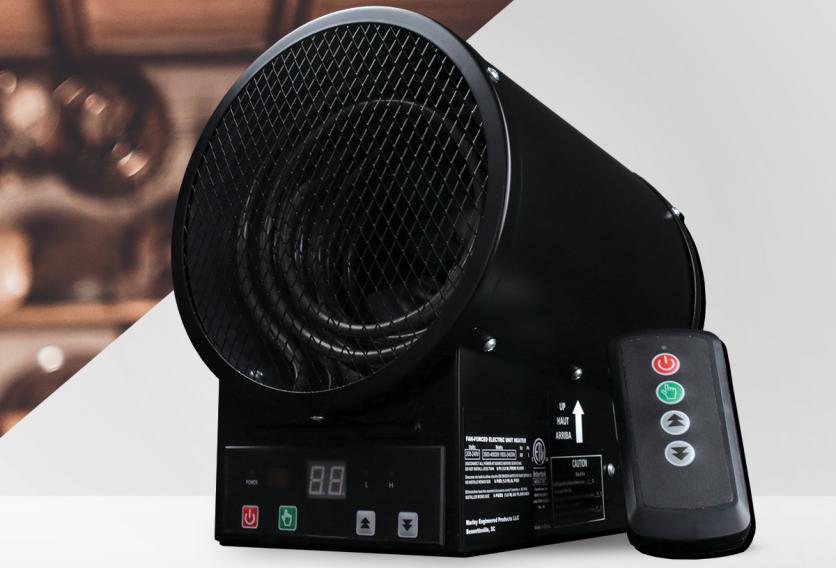
Electric Garage Heaters for a Warm Workshop
By Jim Herring
Most garages are not connected to central heating, making them a large cold spot in most home heating systems. When winter comes, an unheated garage can be a cold and unappealing place for home maintenance, tinkering and other hobbies.
One way to keep a garage workspace toasty even in the harshest winters is choosing a top-notch electric garage heater. Electric heaters offer several benefits over other heating systems — they don’t require venting like gas heaters and can be more cost-effective.
Electric Heater Benefits
One factor to consider when heating a garage is safety. Electric heaters do not pose the same risks as propane or natural gas heaters. Along with a car, truck or other gas-powered vehicles, people also store gas, oil and other flammables in a garage. Because there are no open flames or exhaust fumes with electric heaters, they’re safer to use around gas vehicles and lawn tools.
Electric heaters also offer efficiencies that other heaters do not. With an electric garage heater, every bit of electricity used is converted into heat. With propane, on the other hand, only 80 percent of its fuel is used for heat while the other 20 percent is lost by-products. That fuel loss translates into inefficiency and can mean higher costs for homeowners.
Electric garage heaters also provide the flexibility to provide warmth without taking up floor space or creating a tripping hazard. They can be mounted on the wall or ceiling, and angled to push warm air horizontally, vertically or in any other desired direction. These installation and airflow options are much harder to achieve with a gas garage heater.
Choosing the Appropriate Heater
Whether using the garage for random hobbies or a regular hangout, there are several electric heating options to choose from including radiant electric, portable heaters and fanforced units:
• Radiant electric heaters are designed to target a specific area with heat, typically using infrared technology to heat the objects in the room instead of the air.
• Portable heaters are easy to move around the garage, targeting heat to the necessary spots where one is working.
• Fan-forced heaters move warm air throughout an entire garage for balanced, all-over heating.
Consider how the heater will be best used in your garage before making a selection.
Garage Heater Installation Tips
How best to install an electric heater varies depending on the type. Some models may need to be wired by an electrician or trained professional, while others are portable and can be easily mounted and simply plugged in.
Before hooking anything up, be sure to check the voltage requirements. With a plug-in 120V electric garage heater, for example, all that’s needed is an outlet. An electric heater that runs at a voltage higher than 120, however, will need to be wired in. This will require some electrical work.
Also, make sure that the model of heater is sized appropriately for the space. To ensure a heater is generating enough heat to warm a designated area, match the wattage level of the heater with the size of the garage.
No matter how it is being used, homeowners looking to heat up their garage space should consider an electric garage heater to keep the space warm even in the coldest of conditions. Marley Engineered Products has a wide variety of electric garage heater options to suit any and all needs. View the selection at https://www.marleymep.com/electric-garage-heaters.
Jim Herring is the supervisor of Total Custom Solutions & Technical Services at Marley Engineered Products®, a leading North American designer and manufacturer of reliable comfort heating and ventilation solutions for residential, commercial and institutional buildings. Recognized by contractors, architects, engineers and HVAC professionals for providing a wide range of high-performance, reliable heating and ventilation solutions, Marley Engineered Products’ brands include QMark®, Berko®, Fahrenheat® and Leading Edge®.
You can also view this article in the February edition of Cheif Engineer here: https://chiefengineer.org/wp-content/uploads/2019/03/CEAC_mag_1902_p.pdf.

